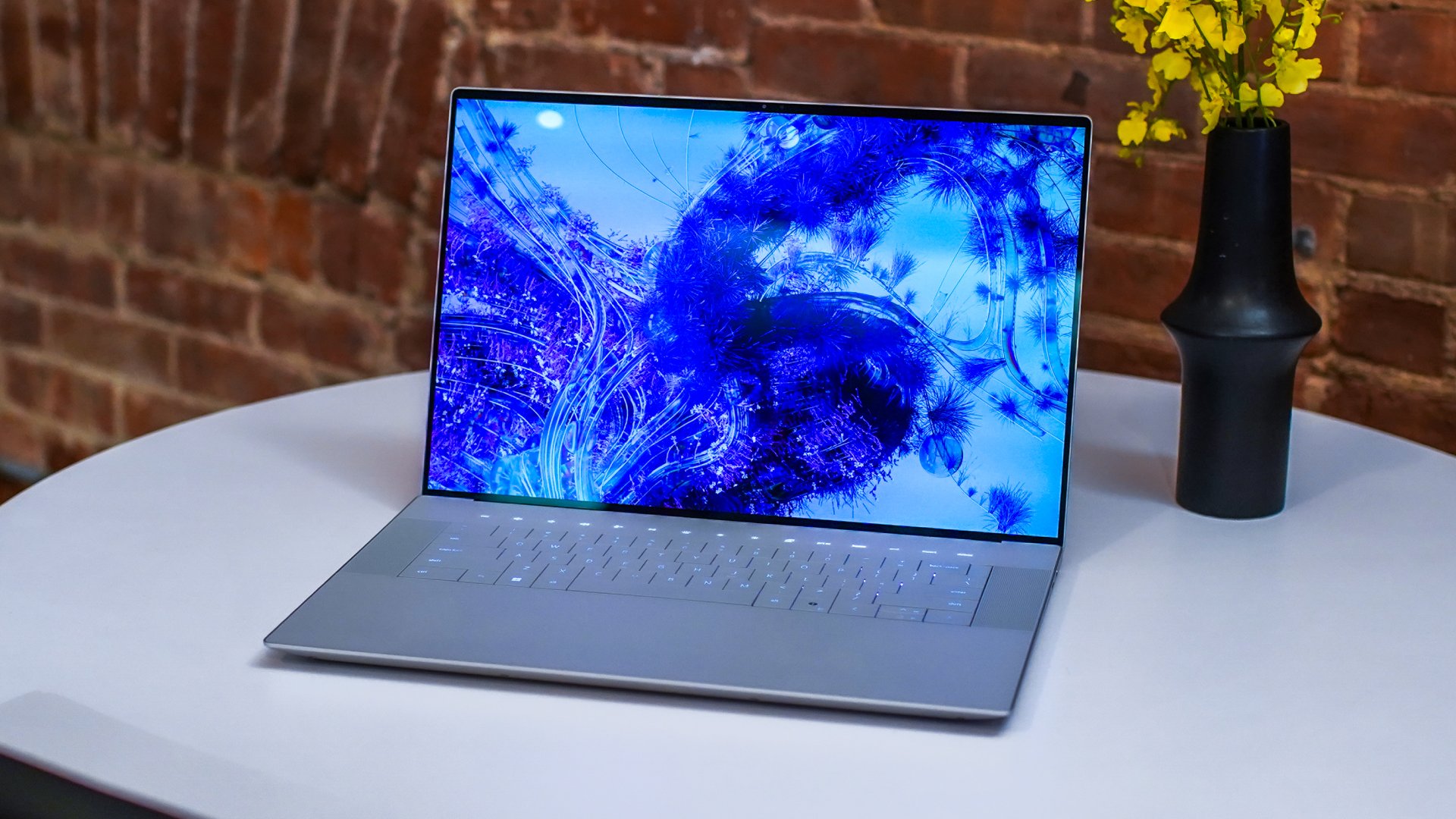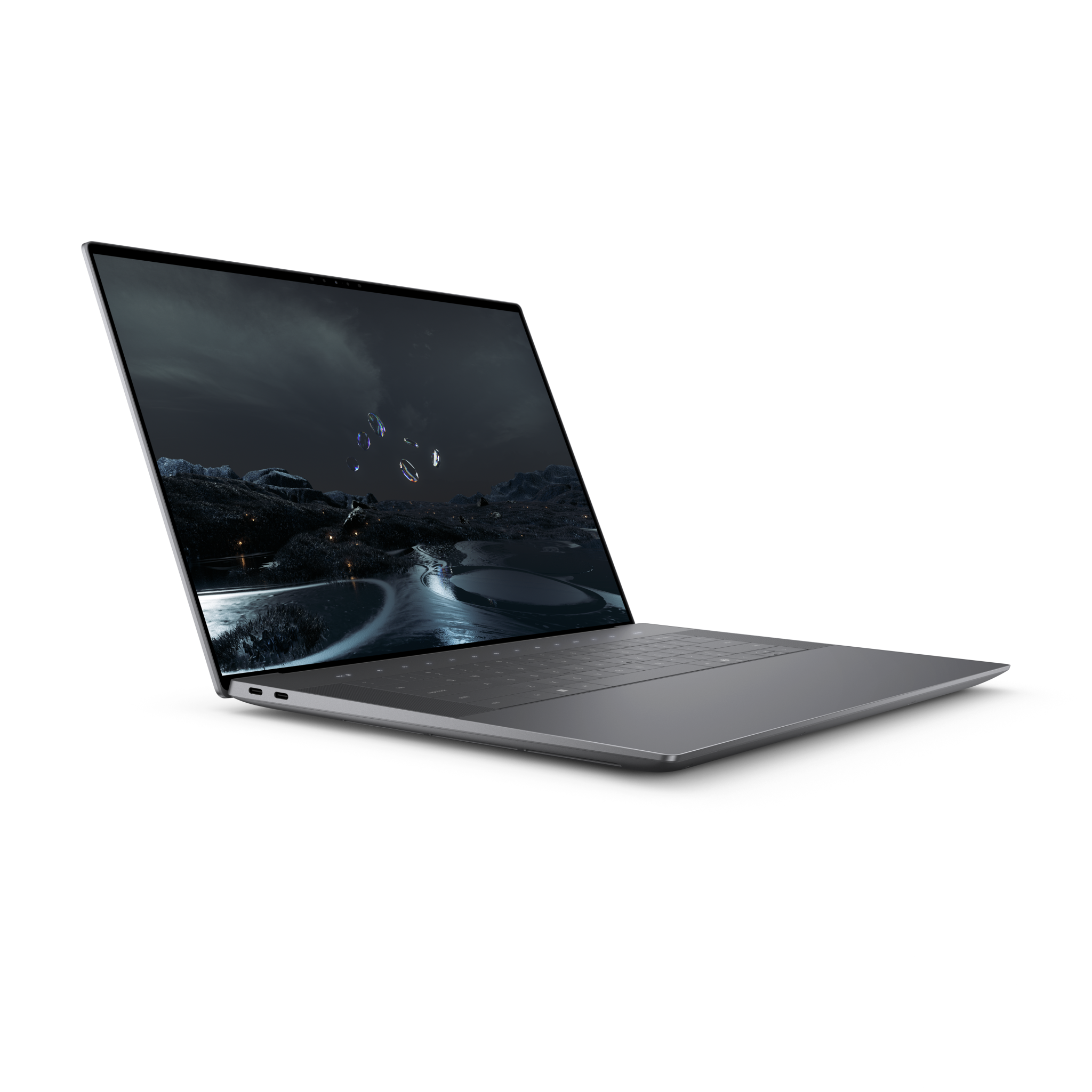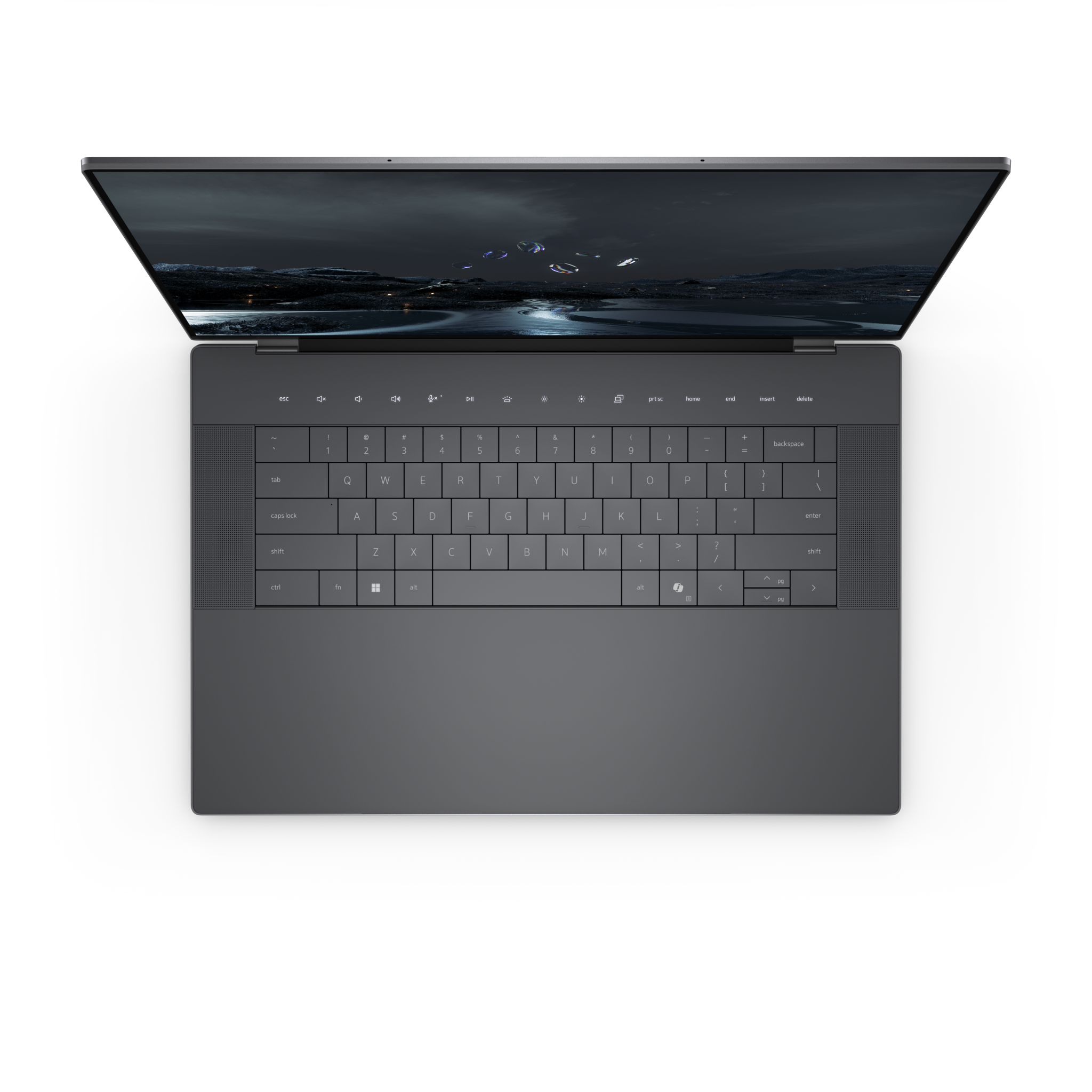Dell's new RTX 4070-powered XPS 16 laptop is an irresistible OLED beauty
Not strictly a gaming laptop, but the want is still off the scale...

As the CES techfest thunders towards us with unstoppable momentum, Dell has pulled the wraps off its latest XPS laptops and the new 16-inch model looks almost irresistible. It's not an out-and-out gaming laptop. But it is available with an Nvidia RTX 4070 GPU and it's also drop dead gorgeous.
For its new XPS laptops, Dell has rolled out the minimalist design ethic first seen on last year's XPS 13 Plus across the entire range. Most obviously that means an "invisible" glass trackpad driven by haptic feedback, the signature ultra-flat keyboard with tightly spaced keys and those clever backlit function keys that disappear into the panel above the keyboard proper.
Then add the ultra-slim bezels that have been central to the XPS design language for a few years now and you have, arguably, the slickest and most futuristic looking laptops on the market.
The 16-inch model is the most interesting, offered as it is with up to RTX 4070 graphics. There's also a new 14-inch model with discrete graphics, but that's limited to the RTX 4050 GPU.
The 13-inch XPS can't be had with a discrete GPU, but like the rest of the range is powered by Intel's new Meteor Lake chip, which has perhaps the fastest integrated graphics yet seen and might actually be OK for a little light gaming.

Getting back to the XPS 16, that Nvidia RTX 4070 GPU is the 60W version, which falls around the middle of the 35W to 115W range Nvidia dictates for the 4070. In other words, this isn't going to be one of the faster 4070 laptops around. There is a price to be paid for the slick looks and thin chassis, then—the XPS 16 is just 18.7mm thick and weighs in at 2.2kg for the most powerful configuration.
Screen wise, the XPS 16 comes with two options, both measuring 16.3 inches. There's the base 1,920 by 1,200 LCD panel running at 120Hz and up to 500 nits. More intriguing is the 4K+ (3,840 by 2,400 pixels) OLED touch panel. It offers 90Hz refresh, which is actually a sensible compromise for a laptop, and is rated at 400 nits. It's probably pretty stunning.
Keep up to date with the most important stories and the best deals, as picked by the PC Gamer team.




There's also a 99.5Whr battery, the maximum size allowed for air travel. It will be interesting to see what kind of battery life is possible with those new Meteor Lake CPUs.
Speaking of which, the XPS 16 is available with up to the Intel Core Ultra 9 Processor 185H, which is currently the top Intel Meteor Lake chip. The new XPS 14 tops out with the Core Ultra 7 Processor 165H, as does the XPS 13. Those two models also have OLED screen options, with the XPS 14's running at 120Hz and the XPS 13's at 60Hz.

Best CPU for gaming: The top chips from Intel and AMD.
Best gaming motherboard: The right boards.
Best graphics card: Your perfect pixel-pusher awaits.
Best SSD for gaming: Get into the game ahead of the rest.
Oh, and all of these new XPS beasts will come with the new dedicated Microsoft Copilot key for rapid access to various AI features. Those Intel Meteor Lake chips, of course, have a dedicated NPU for accelerating so-called AI tasks.
Exactly how useful that will prove in practice remains to be seen. But CES 2024 is going to be an avalanche of AI messaging, so it's inevitable that AI functionality is a major part of the sales pitch for these new XPS laptops.
But really, it's the super slick styling, compact form factor and the promising combo of that 90Hz OLED panel and RTX 4070 graphics that has us excited. There's no word on pricing just yet, but none of these XPS machines are going to be budget priced, that's for sure.
_____________________________________
PC Gamer's CES 2024 coverage is being published in association with Asus Republic of Gamers.

Jeremy has been writing about technology and PCs since the 90nm Netburst era (Google it!) and enjoys nothing more than a serious dissertation on the finer points of monitor input lag and overshoot followed by a forensic examination of advanced lithography. Or maybe he just likes machines that go “ping!” He also has a thing for tennis and cars.

